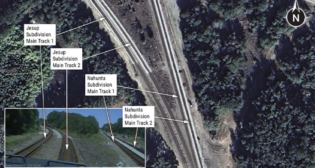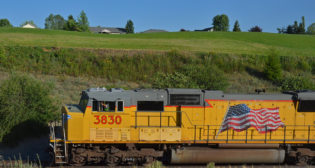
Preventing, not chasing, the ambulance
Written by David Schanoes, Contributing EditorThe Sept. 29th NJ Transit accident in Hoboken will, of courser, trigger another round of the now-usual “how could its,” “should nevers,” “told yous,” “failure to properly regulates,” “lack of trusts,” “insufficient crew members,” “inadequate trainings” “cost/benefits,” from the usual parties, most of whom are motivated by the best of intentions, which just happen to coincide with some strictly personal agendas, or strictly organizational agendas, or election needs, and . . .
Believe me, I get the shivering willies just thinking that somebody might ever, ever however, include me in such a group.
I’m a consultant now. When I was a high-ranking operating officer, I did what I did out of a sense of obligation, regardless of how much I was being paid. I was a professional, so I did what I did out of professional responsibility and I expected to be paid for the proper discharge of the responsibility. Money was secondary, and basically, irrelevant to the discharge of the responsibility.
Now I’m a consultant, and my responsibility, separate and apart from the times I am paid as a consultant, is zero, nothing, nada, zilch o-zero, big nothing. It’s “Barkeep, another round please. And could you switch the TV to something other than that interview with those senators, governors, appointees with or without vests telling us shoulda, coulda, woulda?”
If only it were like that. I’d like to tell everyone just how simple it would be to prevent another incident like that in Hoboken or any other terminal. But I kind of don’t want to do it for free, you know what I mean? Believe me, saying that makes me gag myself, know what I mean? I know if anyone ever said that to me when I was an operating officer, I would have said, “Thank you, and please get the &%$#! off the property.”
“Easy” is a relative term; easy to prevent the repeat if only the already existing and proper train control apparatus is engaged and functioning; easy if the task is to prevent a train overrunning the end of track, the bumping block, climbing up on the platform and chasing people down a concourse.
Would PTC have prevented this accident? Yes and no. In theory, yes. In reality, no. Why? Because FRA, in its wisdom, allows railroads to apply for a Main Line Track Exclusion Addendum (MTEA). Meaning? Meaning that in its PTC Implementation Plan (PTCIP), a railroad can designate a passenger terminal exception from PTC requirements for trackage used exclusively as yard or terminal tracks by or in support of regularly scheduled intercity or commuter passenger service where the application for the MTEA relief:
• Describes in detail the physical boundaries of the trackage in question, its use and characteristics (including track and signal charts).
• The maximum authorized speed for all train movements is not greater than 20 mph.
• That 20 mph is enforced by PTC equipment active and installed on the trains within the yard or terminal (i.e. the onboard equipment “reads” non-PTC territory as a speed restriction not exceeding 20 mph).
• Interlocking rules are in effect prohibiting reverse movements without signal indication or verbal permission.
• No freight operations are permitted, or if permitted, no passengers will be aboard passenger trains within the defined limits.
NJT received approval for its PTCIP. The PTCIP included the application of the MTEA for Hoboken Terminal.
Let me take a run at what happened. First, I believe that the speed of the train did not exceed 20 mph, despite what witnesses say. I base that on the distance the train traveled from the bumping block to the apparent point of rest, and the apparent lack of structural damage to the leading end of the control car. Twenty mph is about 29 feet per second, and I estimate that the train traveled about 80-100 feet beyond the proper stopping point, and presuming hitting the bumping block initiated an emergency application of the brakes, with an emergency brake deceleration rate of around 5 feet/sec/sec. You get the picture.
Why 20 mph, when according to an older NJT timetable, the maximum authorized speed is not to exceed 10 mph on train shed tracks 1-17? Because the automatic overspeed brake application on these cars, when operating on a “restricted” cab, is set at about 19 mph, as that is the numerical maximum for restricted speed operation on the Northeast Coridor.
Cab signals? Cut-in and operative. Speed control? Cut in and operative. Unless this apparatus had failed and the train was operating as a failed train, in which case, according to the older NJT timetable the conductor (the crew person in charge of the train, but not responsible for the operation of the locomotive) should have taken a position on the leading end of the movement, alongside the engineer.
The engineer? Don’t know. Ill, momentarily (or longer) disabled, impaired, asleep, distracted, distracted by the radio, distracted by a cell phone? Don’t know.
Seat belts? Useless. 1) Commuter railroads do not guarantee a seat to every or any passenger on a train. 2) The train was approaching its final stop. People were up, out of their seats, to be first out the door, off the train and on their way 3) Repeat. We do not guarantee a seat to every or any passenger.
Solutions? Call me. Or not. I’m already making myself sick to my stomach. So once I get enough of the “told yous” and “how could its” and “heads must rolls” from the usual group of no-nothings and proud-of-its, I’ll tell you. For free. Some things are more important than money, once your kids have completed college, your grandchildren are well cared for, your medical care is covered, and you still have something left in your IRA.



